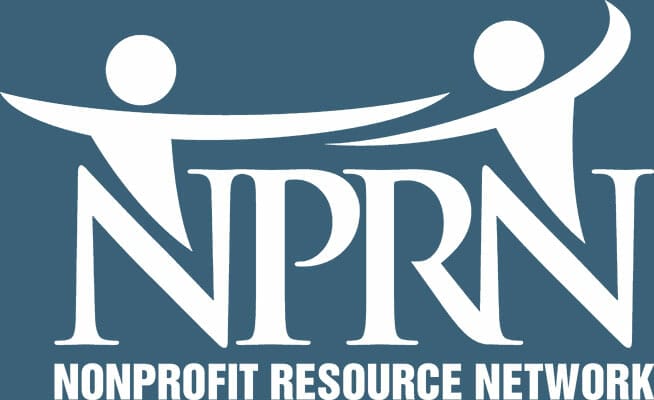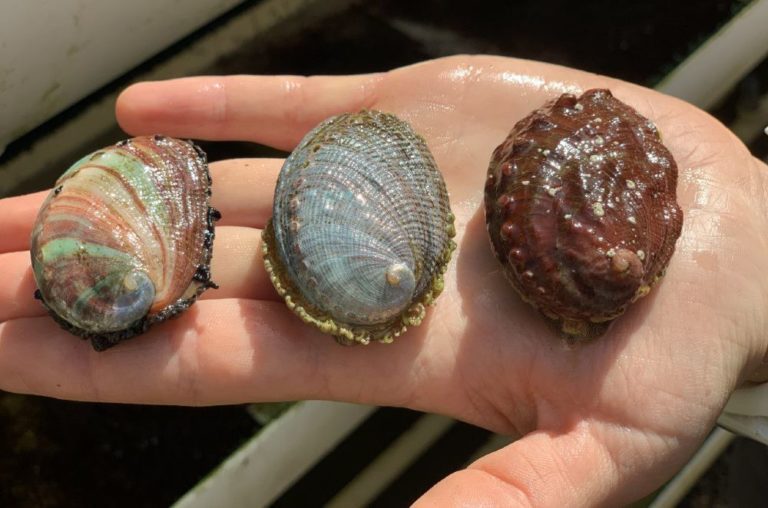The Cultured Abalone Farm (TCAF) is teaming up with the Santa Barbara Museum of Natural History Sea Center and the National Oceanic and Atmospheric Administration (NOAA) Southwest Fisheries Science Center (SWFSC) to give high school students first-hand experience with sustainable seafood and marine conservation. With support from a mini-grant issued by NOAA Fisheries and the North American Association for Environmental Education (NAAEE), TCAF, the Sea Center, and SWFSC are developing curriculum to empower the next generation to understand and participate in sustainable aquaculture (raising marine species for food) and conservation. Sustainable aquaculture is not only a growing career field, but a key component to food security and the preservation of marine resources locally and globally.
The new curriculum will use a species case study that draws on the partners’ long experience together: white abalone (Haliotis sorenseni). NOAA Fisheries, the Sea Center, and TCAF are already partners on the White Abalone Restoration Consortium (WARC), a group of organizations working together to study this endangered marine snail and restore wild populations. Once a culturally, economically, and ecologically important species, white abalone numbers have crashed since the 1970s, catastrophically depleted by overharvesting. WARC partners collaborate to raise white abalone in captivity and outplant them in their native waters, along with researching how abalone could be affected by new challenges like rising sea temperatures and ocean acidification.
Since 1989, TCAF’s facility on the Gaviota Coast has sustainably raised for human consumption a different but closely-related species, red abalone (Haliotis rufescens). Over the years, the aquaculturists have learned a lot about what it takes to keep abalone healthy and reproducing. TCAF has shared this knowledge with WARC partners raising white abalone in captivity, including the Sea Center. In addition to raising juvenile abalone and participating in spawning attempts to create more juveniles, the Sea Center has acted as a major local point of contact for the public to learn about white abalone and the WARC’s efforts.
Now TCAF, the Sea Center, and SWFSC are working together to create high school curriculum on aquaculture—which spans both science and social studies concepts—with a field-trip twist. TCAF will open its doors to Santa Barbara High School marine biology students participating in the curriculum, with a tour designed to give them personal experience in the field of aquaculture. On completing the curriculum, students will have the opportunity to earn volunteer hours (needed to graduate in Santa Barbara County) by sharing their new expertise with guests at the Sea Center. The partners are developing this curriculum with funding aid from NOAA Fisheries/NAAEE.
Past educational programming at the Sea Center has mostly focused on elementary-age students, but the complex interdisciplinary story of white abalone has much to teach young adults in particular. “We chose high school students because they’re beginning to think about career pathways and starting to formulate their own ideas about the world,” the partners explained in their proposal. “Introducing students to aquaculture at this stage provides them the opportunity to connect many different subjects and begin to see how the things they’re learning in their classes are applied in the field.”
“This project addresses a critical need for building understanding of the essential role of aquaculture in the persistence of California’s iconic abalone populations,” says Kristin Aquilino, Ph.D., lead scientist for the White Abalone Captive Breeding Program. “Providing high school students with an opportunity to both learn about abalone aquaculture in the classroom and experience it first-hand will give them valuable cognitive skills and abilities, as well as make them more informed citizens when it comes to making decisions related to the environment.” Dr. Aquilino is also excited by the potential for this Santa-Barbara-based pilot curriculum to be reproduced by educators and aquaculturists around California: “I see this pilot program as an incredible doorway to aquaculture education statewide.”
To learn more about the partners, visit culturedabalone.com, sbnature.org/seacenter, and fisheries.noaa.gov/about/southwest-fisheries-science-center
To learn more about white abalone, visit NOAA’s Species in the Spotlight page: fisheries.noaa.gov/species/white-abalone
To learn more about the grant initiative funding the local project, visit https://naaee.org/our-work/programs/eeblue/aquaculture-initiative
To learn more about NAAEE, visit naaee.org


Leave a Response